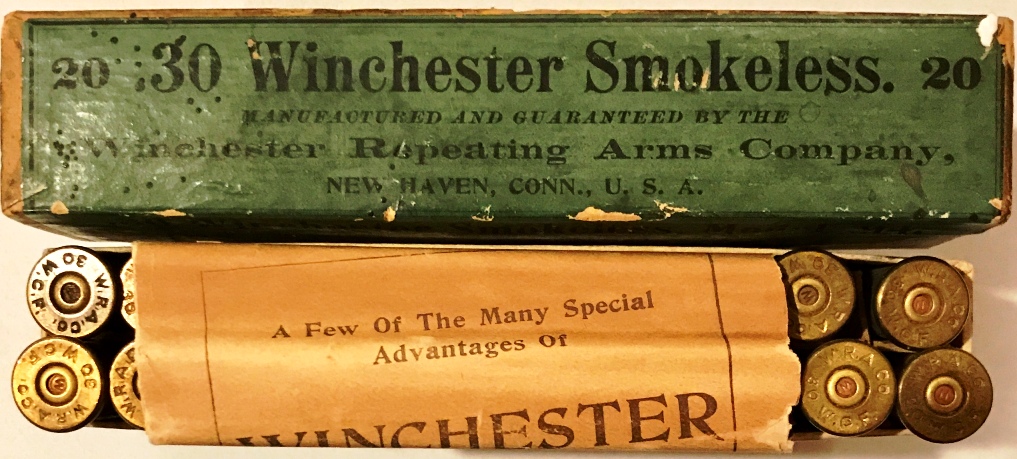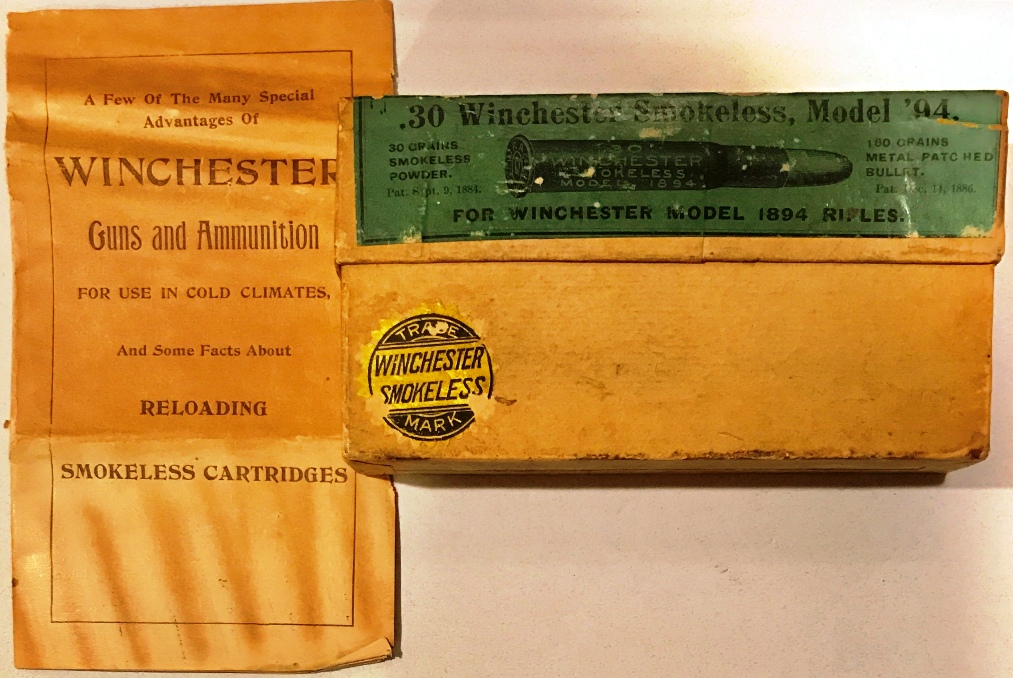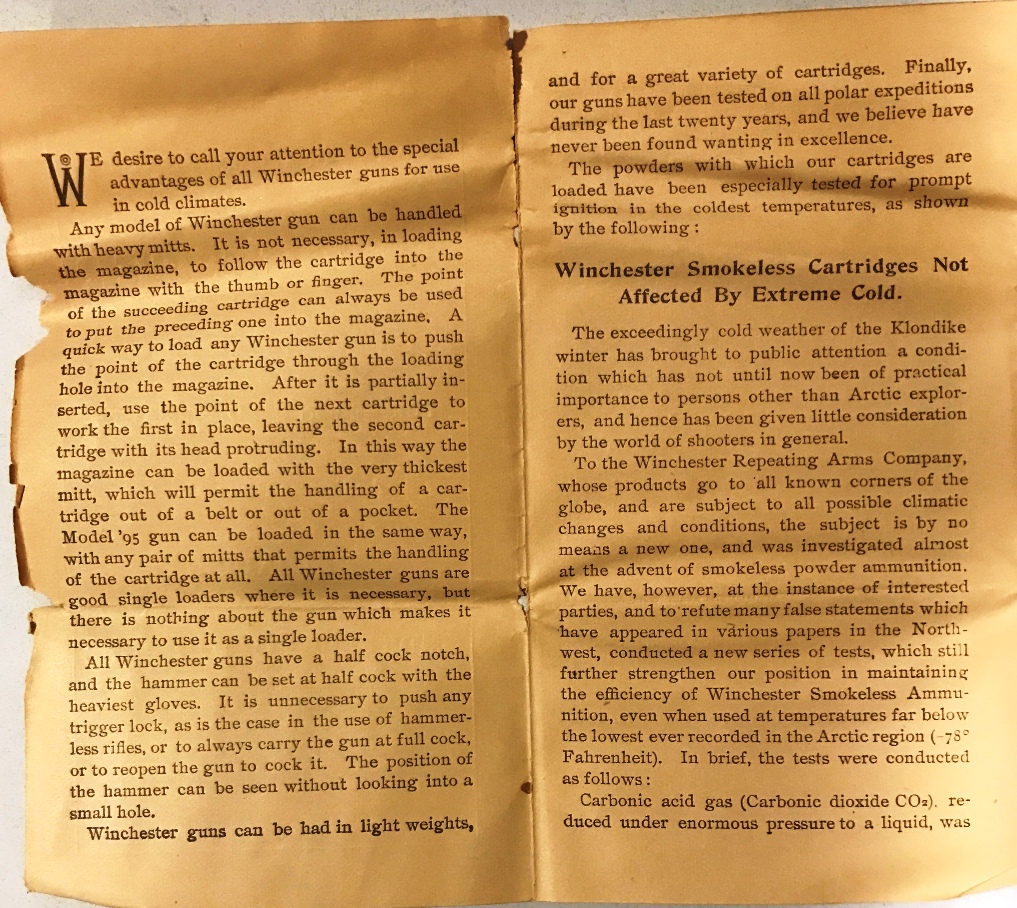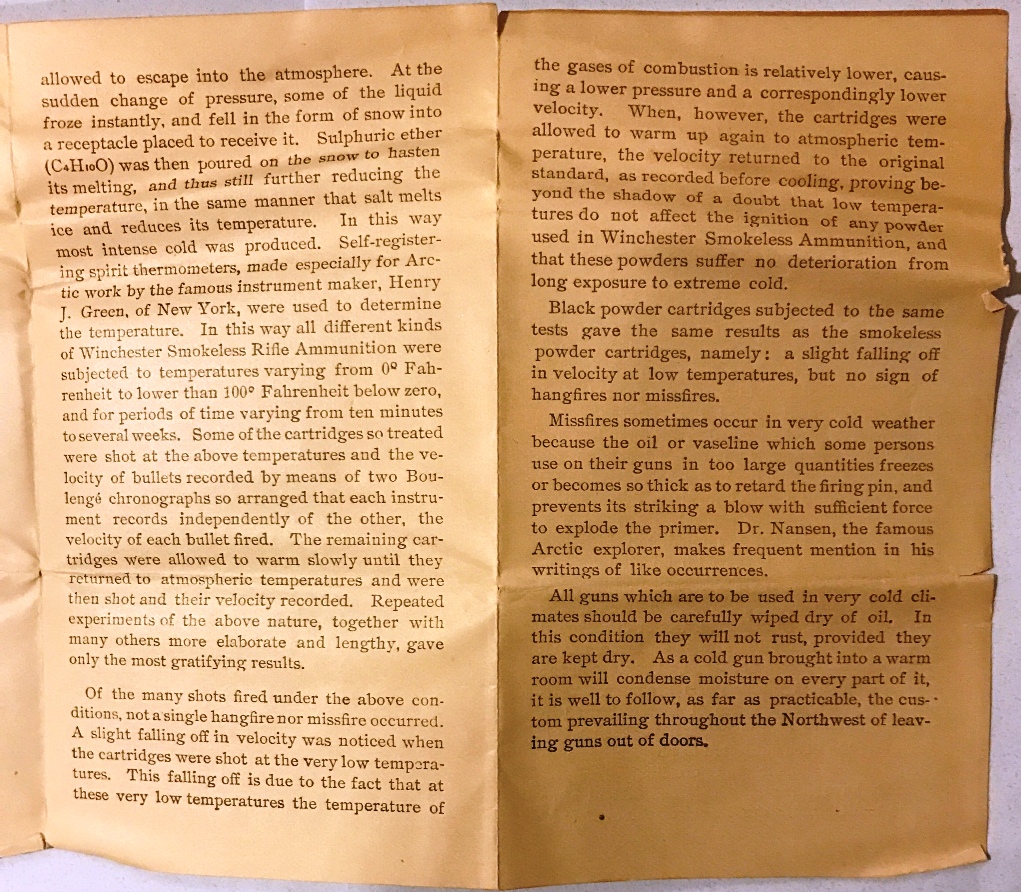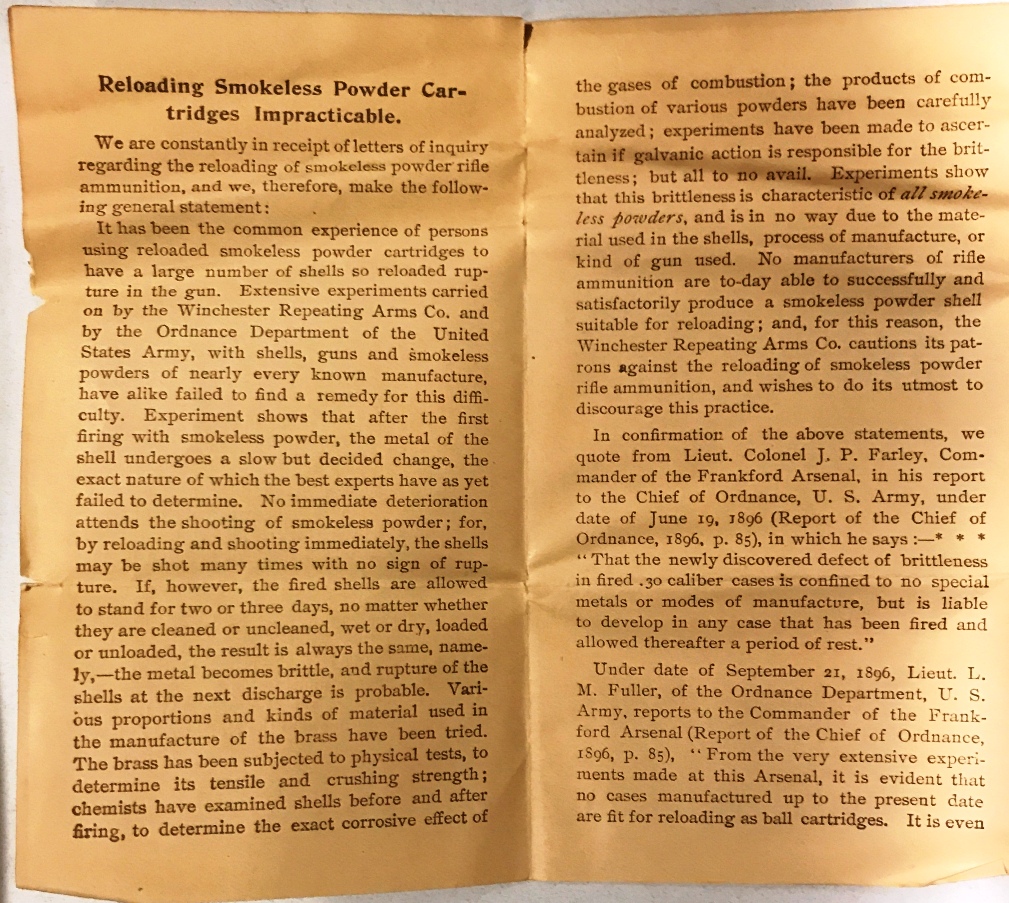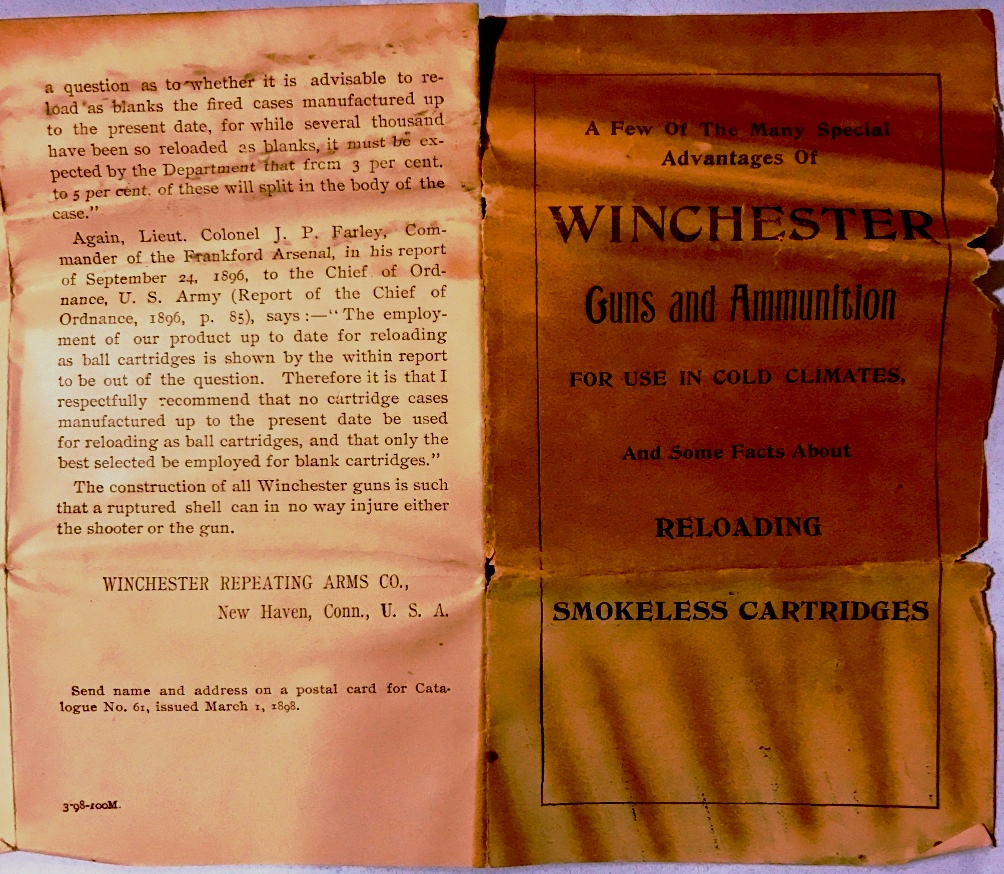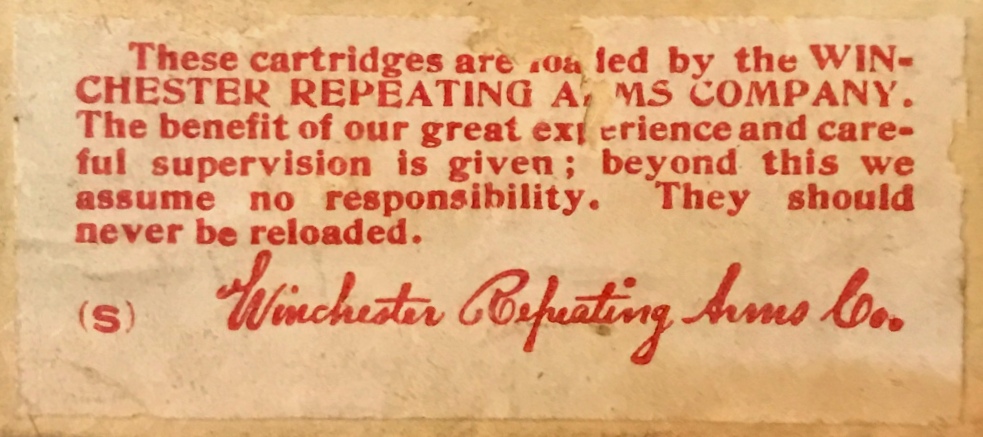|
THE CARTRIDGE COLLECTOR'S EXCHANGE |
|
|
|
Home of the Old Ammo Guy's Virtual
Cartridge Trading Table
Picture Page December 2018
Please note: Unless otherwise indicated, the pictures on this web site are my property, and should not be used by anyone without crediting the source. An Early .30 Winchester Cartridge Box..... I bid on and won a small group of Winchester cartridge boxes in an auction last month. My main interest was in an early box of .44 W.C.F. cartridges that was in the lot but, as is often the case in these multi-box lots, one of the other boxes included an unexpected surprise that was not included in the auction description. That other box is the subject of this month's picture page.
When the Winchester Repeating Arms Company introduced the Model 1894 rifle in their November 1894 catalog, it was available chambered only for the .32-40 and .38-55 black powder cartridges. In the August 1895 catalog, they introduced two new cartridges for the rifle, the .25-35 and the .30-30, both developed by Winchester and both available only as smokeless loads.
In their book One Hundred Years of Winchester Cartridge Boxes 1856 - 1956 by Ray Giles and Dan Shuey, they categorized a confusing array of .30 W.C.F. boxes into seven distinct types of box designs, each of which included a number of variations, in an effort to get a handle on the order in which each was produced and approximately when. This particular box that I won in the auction and .
. which is shown in these pictures was categorized among the earliest boxes as the third box variation (of known variations) for Type 1 Two-Piece Boxes of standard .30 W.C.F. loads that Winchester produced, with an .
. estimated production period of 1896 - 1897. As more box variations and other information surface, this system of categorizing them becomes more precise, allowing the accuracy of dating the individual boxes to improve.
Some of the
characteristics of this box that put it in the
. . The photo below shows the headstamps on the cartridges in the box and their protected primers, as well as the .
. unexpected surprise, a folded brochure that was in the box that was not mentioned in the auction description and that I had not seen before. One of these brochures is pictured on page 75 of Dan Shuey's W.R.A.Co. Headstamped Cartridges and Their Variations. It has a date code of 10-98 on the back, along with the notation 100K, indicating that it was one of 100,000 printed in October of 1898. My brochure is coded 3-98 100K, indicating it was among 100,000 that had been printed in March 1898. on the basis of these two brochures, I am fairly confident in saying that my .30 W.C.F. was made in 1898, between the months of March and September. . . . Dimensions of the brochure in the unfolded state shown here with the box are approximately 5 3/4" by 3 1/4". Included in it is information regarding the dependability . . of Winchester smokeless cartridges when fired in extremely cold environments, such as in the Klondike. It is notable that this was a timely topic in 1898 when the brochure was printed, as the gold rush in the Klondike region of Alaska occurred between 1896 and 1898.
Also discussed in the brochure was the revelation that smokeless cartridges that had been fired had a tendency for the brass in the cases to undergo a structural change over a period of just a few days, resulting in the metal becoming brittle. After being reloaded, these cases tended to rupture when they were fired; as a result, Winchester recommended that they not be reloaded. Photos of all pages of the brochure are shown below.
. . .
. . .
. . .
. . .
Shortly after the .30 W.C.F. box pictured above was produced, Winchester began attaching a small label to their boxes of smokeless cartridges warning against reloading the fired cases due the high incidence of reloaded cases rupturing when fired, as spelled out in the brochure. This particular label was on the front of the box of .40-82 Winchester smokeless cartridges produced between 1898 and 1900 that I wrote about on my May 2018 picture page. At that time I speculated that the company's discouraging the reloading of their smokeless ammunition might be intended to reduce their liability in the event of an accident with cartridges that were loaded outside of the factory. This brochure makes it clear that wasn't the reason at all. . . Sources: One Hundred Years of Winchester Cartridge Boxes 1856 - 1956 by Ray T. Giles and Daniel L. Shuey 1856-1956, 2006, Schiffer Publishing, Ltd, 4880 Lower Valley Road, Atglen, PA. 19310 W.R.A.Co. Headstamped Cartridges and Their Variations, Daniel L. Shuey, 1999, WCF Publications, 2516 Highcrest Road, Rockford, Illinois, 61108
.
|
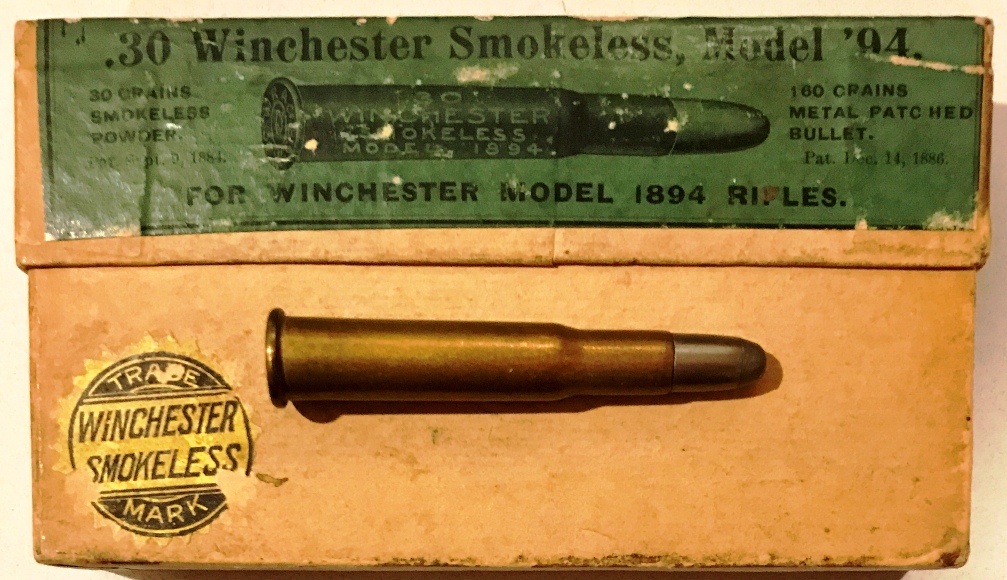


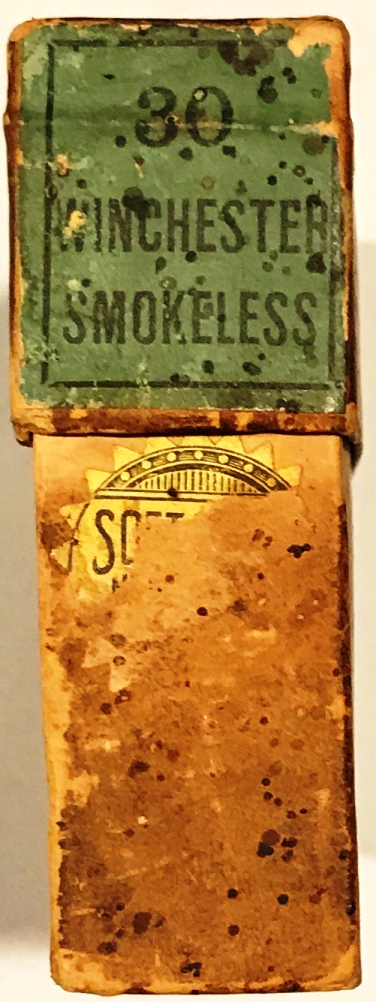 category that it is are it's
square corners, the green non-sealing label covering the top and front of the lid, the
labeling as .30 Winchester Smokeless on the top and front, the yellow and
black 'Sunburst' Winchester Smokeless label on the front, the yellow and
black 'Sunburst' soft point metal patched bullets label on the box end (shown
in the photo here, much
of which has flaked off), the two patent dates on the left and right sides
of the front labeling with the left date not indented while the right one
is, and (whew!!) a gap between the 'c' and the 'h' in
the word 'Patc hed' on the right side of the front labeling.
category that it is are it's
square corners, the green non-sealing label covering the top and front of the lid, the
labeling as .30 Winchester Smokeless on the top and front, the yellow and
black 'Sunburst' Winchester Smokeless label on the front, the yellow and
black 'Sunburst' soft point metal patched bullets label on the box end (shown
in the photo here, much
of which has flaked off), the two patent dates on the left and right sides
of the front labeling with the left date not indented while the right one
is, and (whew!!) a gap between the 'c' and the 'h' in
the word 'Patc hed' on the right side of the front labeling. 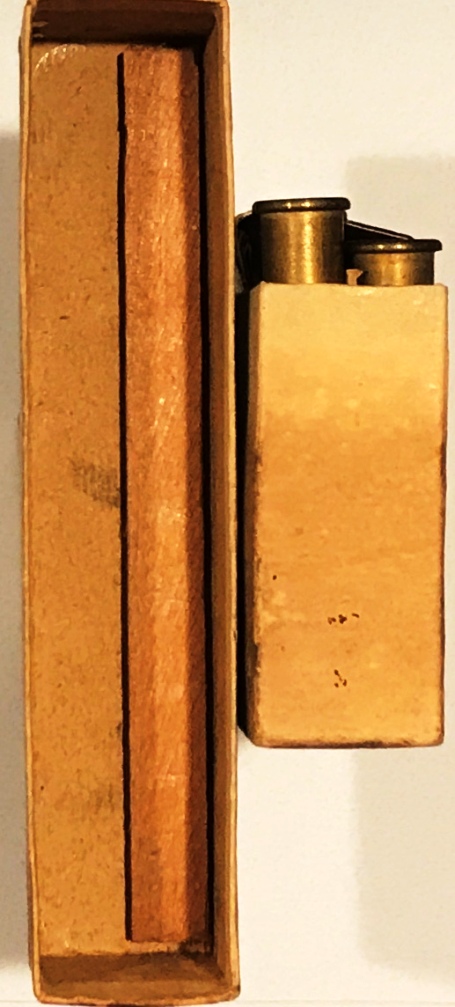 Through about
1898, these square cornered boxes usually had the
noses of the bullets of the back row of cartridges sitting on a strip of
wood glued into the bottom of the box resulting in their heads being raised
3/16" or so above the front row. The purpose of this was to make removal of the
individual cartridges easier when loading a rifle. The wood strip in the
bottom of the box and the raised heads of the back row of cartridges can be
seen in the photo here. These boxes usually had one of the wood strips glued
to the inside of the box lid as well.
Through about
1898, these square cornered boxes usually had the
noses of the bullets of the back row of cartridges sitting on a strip of
wood glued into the bottom of the box resulting in their heads being raised
3/16" or so above the front row. The purpose of this was to make removal of the
individual cartridges easier when loading a rifle. The wood strip in the
bottom of the box and the raised heads of the back row of cartridges can be
seen in the photo here. These boxes usually had one of the wood strips glued
to the inside of the box lid as well.